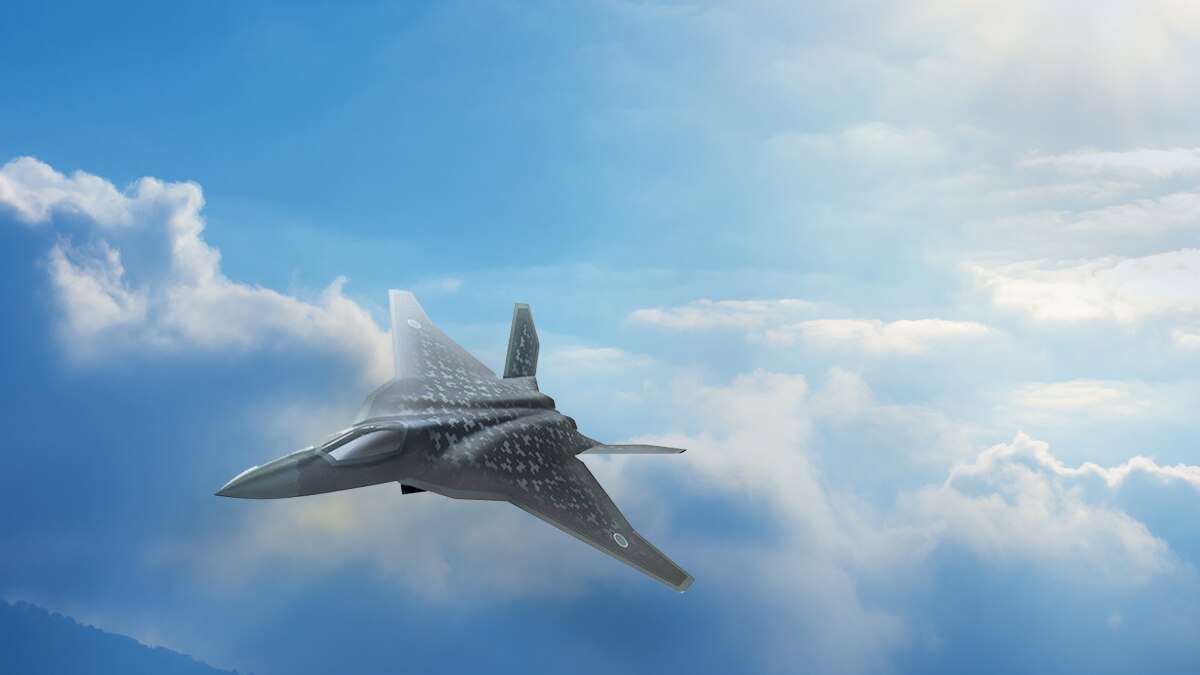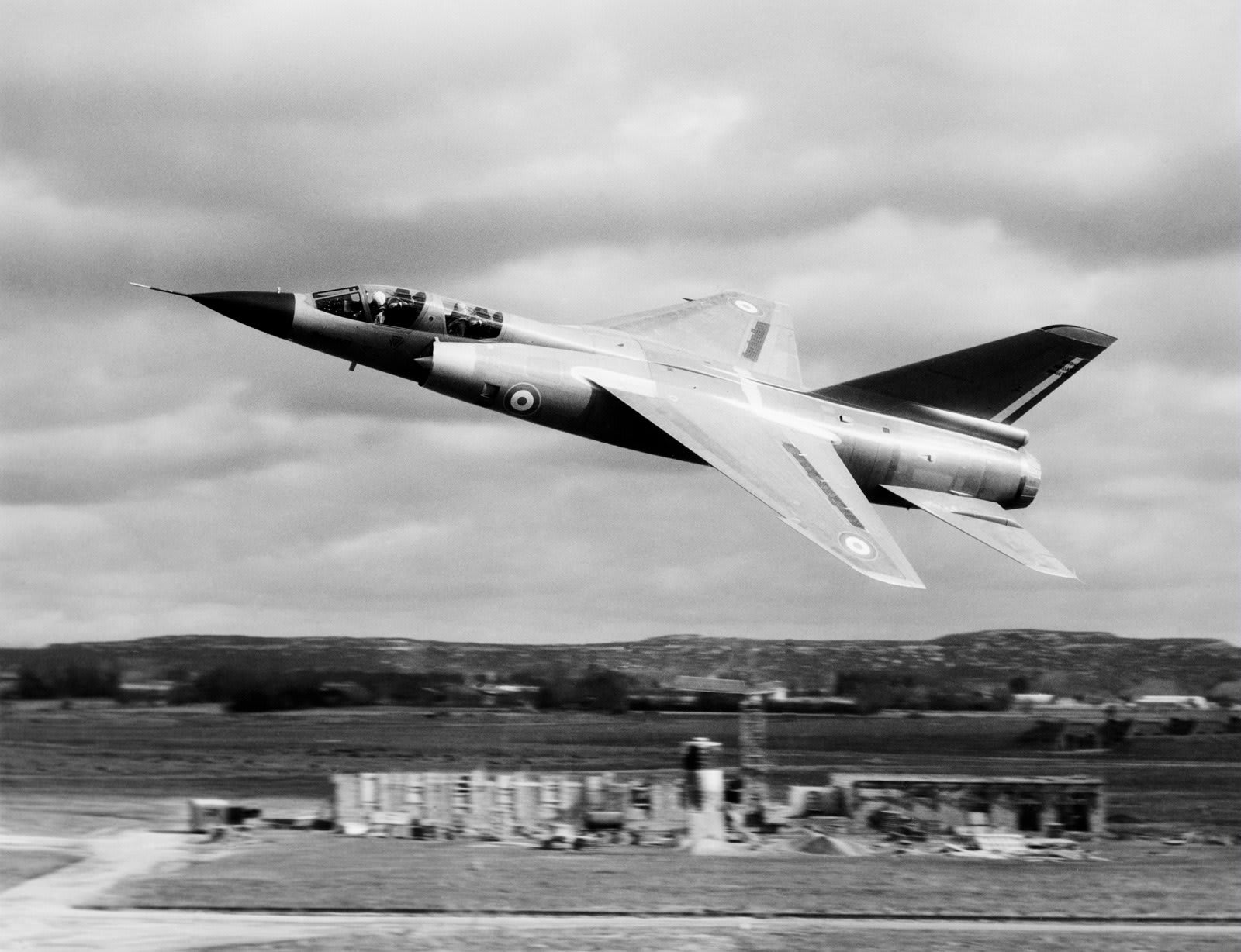F-2 Aircraft - The Mitsubishi F-2 is a multi-role fighter aircraft derived from the Geral Dynamics F-16 Fighting Falcon, produced by Mitsubishi Heavy Industries and Lockheed Martin for the Japan Air Self-Defse Force, with production split between Japan and Japan on a 60/40 basis. United States. The basis for the F-2 design is the F-16 Agile Falcon, a failed bid by Geral Dynamics to provide a low-cost alternative to the Advanced Tactical Fighter (ATF). Production began in 1996, and the first aircraft service in 2000. The first service for 76 aircraft in 2008, with a total of 98 structures manufactured. The first active electronically scanned array (AESA) radar on a combat aircraft was the J/APG-1 introduced on the Mitsubishi F-2 in 1995.
The F-2 is nicknamed "Viper Zero", a reference to the unofficial nickname of the F-16 "Viper" and the Mitsubishi A6M Zero.
F-2 Aircraft

The JASDF and its contractors considered developing a Japanese-designed, Japanese-built replacement for the aging Mitsubishi F-1 fighter as early as 1981. The official feasibility study was started in 1985.
Mitsubishi F 2 Viper Zero 3d Model
Japan's original intentions to develop the aircraft domestically were based on Japan's previous success in producing the F-15J fighter under license from McDonnell Douglas.
Japanese defense contractors argued that they needed to build a new plane from scratch in order to develop the skills of their engineers and, in turn, develop Japan's aerospace industry.
As the program began to take formal shape in 1985, several US officials expressed concern that the program would result in an inferior aircraft and weaken the US-Japan defense relationship. Ptagon officials favored co-production or joint development of an aircraft based on the F-16 or F/A-18 platform, as they believed that Japan would not agree to purchase American aircraft.
In early 1987, the United States, through Caspar Weinberger and other administration officials, began officially pressuring Japan to carry out the project as a bilateral joint development between the United States and Japan.
Eurofighter Typhoon F.2 1/100 Diecast Aircraft Model
The timing of this lobbying coincided with the height of "Japan-bashing" in the United States: the Toshiba-Kongsberg scandal, in which Toshiba was found to have sold propeller grinding machines to the Soviet Union in violation of COCOM sanctions, became public in May 1987. Japan's negotiation of the position changed due to the danger of deterioration of US-Japanese relations.
Under a memorandum of understanding signed in November 1988, Geral Dynamics will provide its F-16 Fighting Falcon technology to Mitsubishi Heavy Industries and will perform up to 45 percent of the development work as a joint prime contractor.
On the American side, senior officials in the US State Department and the US Defense Department supported the project as a means of giving the US access to Japanese technology and as a means of strengthening US-Japan relations, but the Commerce Department and many members of Congress opposed the project, because the risk of reducing Japan's ability to compete with American airlines.

Opponents in Congress argued that Japan should acquire American aircraft to offset the trade deficit between the two countries.
Photos Fighter Airplane Airplane F 2 Mitsubishi Aviation
After George H. W. Bush took office as President of the United States in January 1989, the US government responded to domestic criticism of the agreement by seeking "clarification" of the terms of the MOU, which the Japanese government saw as an attempt to renegotiate it. The Bush administration was particularly concerned about the risks of technology transfer to Japan.
Bush announced a revised agreement in April 1989, shortly before the resignation of his Japanese counterpart Noboru Takeshita, under which Japan's access to flight and weapons control software was limited, while the United States was to have access to any new technology Japan developed for the project.
Japanese lawmaker Shintaro Ishihara was a vocal critic of the final agreement, writing in 1990 that "our Ministry of Foreign Affairs and other government agencies have decided that it is better to eat humble pie than incur the wrath of Uncle Sam on another bilateral issue, ” and noted that “We provide our most advanced defense technology to the United States, but we pay licensing and patent fees for every piece of technology we use.”
In 1984, General Dynamics offered a larger version of the F-16 to the US Air Force, considering it a low-cost alternative in the Advanced Tactical Fighter competition. None of them came to life, but this concept became the starting point for the development of the F-2. The F-2 used the F-16 Agile Falcon wing design, but much of the electronics were further updated to 1990s standards. Japan has selected the fighter to replace the F-4EJ and complement the F-15J, its main air superiority fighter. The program involved the transfer of technology from the United States to Japan and vice versa. The responsibility for cost sharing is divided 60% to Japan and 40% to the USA.
Mitsubishi F 2 By Darthpandanl On Deviantart
Lockheed Martin would manufacture all rear fuselage and wing leading edge flaps and eight left wing boxes.
The F-2 program was controversial as the unit cost, which includes development costs, is approximately four times that of the Block 50/52 F-16, which does not include development costs. Including development costs distorts the incremental unit costs (this happens with most modern military aircraft), although the cost per aircraft at the planned procurement level were somewhat high. An initial plan of 141 F-2s would reduce the unit price by up to $10 million (€7.5 million) per aircraft. unit, excluding the reduced costs of mass production. From 2008, 94 flights are planned.
The first flight of the F-2 was on 7 October 1995. Later that year, the Japanese government approved an order for 141 (but this was quickly reduced to 130) for service through 1999; structural problems led to service trials being delayed until 2000. Due to profitability issues, orders for the aircraft were reduced to 98 (including four prototypes) in 2004.

The last of the 94 production aircraft ordered under the contract was delivered to the Ministry of Defense on 27 September 2011.
Mitsubishi F 2 Clipart. Free Download Transparent .png
During the launch of the last produced F-2 fighter, Mitsubishi Heavy Industries confirmed that production of the F-2 will cease and that the manufacturer will no longer produce F-2 fighters.
Geral Electric, Kawasaki, Honeywell, Raytheon, NEC, Hazeltine and Kokusai Electric were among the primary component subcontractors. Lockheed Martin supplied the rear fuselage, nose slats, inventory control system, a large percentage of the wing boxes (as part of a two-way technology transfer agreement),
Kawasaki made the center section of the hull, as well as the main wheel and engine doors,
Some of the avionics were supplied by Lockheed Martin, and the digital fly-by-wire system was jointly developed by Japan Aviation Electric and Honeywell (formerly Allied Signal).
Hasegawa Egg Plane F 2\
In addition, the air traffic control computer, air traffic control laws and associated computer software were mainly developed and integrated by Japan.
Larger wings give the aircraft better lift and maneuverability relative to its thrust, but also increase the weight of the airframe in various ways. Greater weight can have negative effects on acceleration, climb, payload and range. To make the larger wings lighter, the skin, handles, ribs and wing cap are made of graphite-epoxy composite and co-cured in an autoclave. This was the first application of co-cured technology to a production tactical fighter.
This wing technology has eliminated some childhood ailments, but has proven to be a leading use of technology that allows for weight savings, improved range, and some stealth. This technology was transferred back to America as part of the Industrial Partnership Program.

Mitsubishi used the existing F-16 design as a design reference guide, and more than 95% of the F-16's technical drawings are changed for the F-2.
Let's Admire The Underrated Jasf Mitsubishi F2(1440x1123)
Such as the version of the F-16 used by South Korea, the Netherlands, Norway, Greece, Turkey, Indonesia, Taiwan and Vezuela.
On 7 February 2013, two Russian Air Force Sukhoi Su-27 fighter jets briefly invaded Japanese airspace off Rishiri Island near Hokkaido, flying south over the Sea of Japan before returning north.
The Japanese Ministry of Defense released a photo of a JASDF pilot of one of two Su-27s.
On 22 August 2013, two Russian Tupolev Tu-142 Bear-F maritime patrol aircraft invaded Japanese airspace near the main southern island of Kyushu for less than 2 minutes. F-2 fighters were withdrawn in response. The F-2 Support Fighter is a multi-role, single-engine combat aircraft produced for the Japan Air Self-Defense Force (JASDF). It was jointly developed in the mid-to-late 1980s and jointly produced in the early 1990s by Mitsubishi Heavy Industries (MHI, the Japanese prime contractor), Lockheed Martin Aeronautics (MHI's main US subcontractor) and others Japanese and American industries. The program remains a hallmark of trust, technology transfer, and division of labor between Japan and the United States.
Mitsubishi / Lockheed Martin F 2a Support Fighter
Based on the design of the Lockheed Martin F-16 Fighting Falcon, the F-2 is capable of both air-to-air and air-to-ground roles, although it is optimized for the latter role to protect Japan's sea lanes. Many of the aircraft's innovative systems, including the fly-by-wire flight control system and the integrated electronic warfare system, were developed in Japan. The F-2 was also the first production fighter to be equipped with an active electronically scanned array (AESA) radar. In 2015, the F-2 became the eighth aircraft platform equipped with Lockheed Martin's Sniper® Advanced Targeting Pod.
The F-2 has a wing area that
F-14 aircraft, f 4 phantom aircraft, f-100 aircraft, f 15 aircraft, f 102 aircraft, f-111 aircraft pictures, f aircraft, f 16 fighter aircraft, f-2 aircraft, f&e aircraft maintenance, aircraft f 35, f 35 fighter aircraft
0 Comments